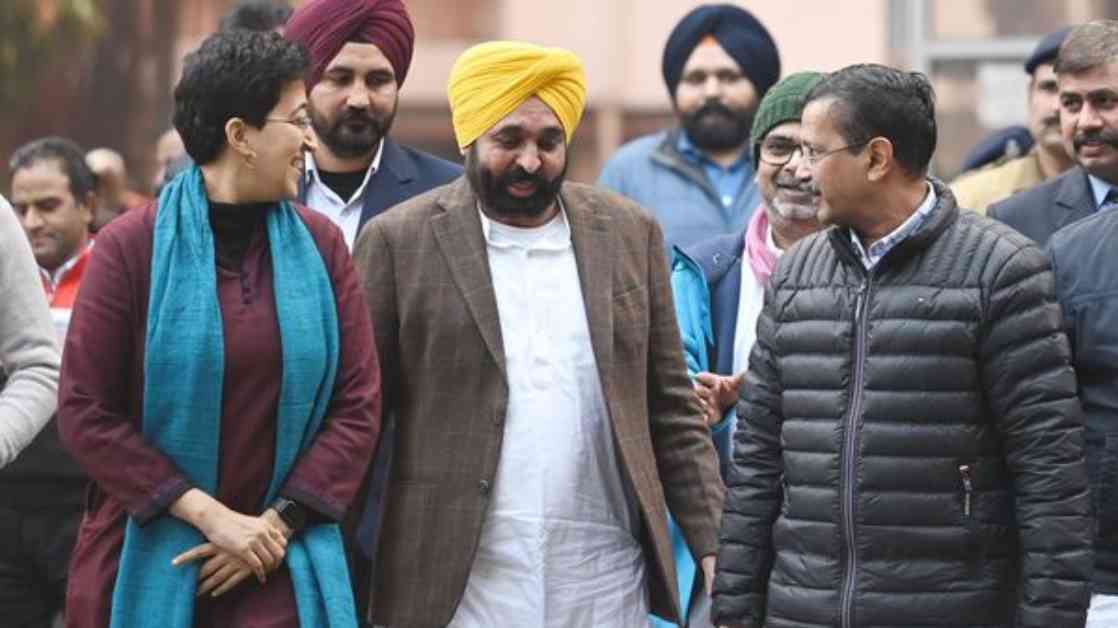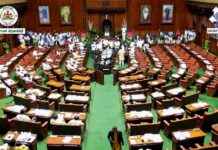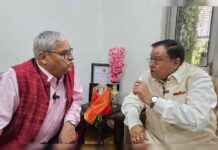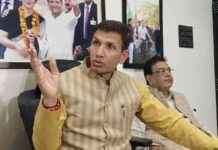Punjab Minister and Aam Aadmi Party (AAP) leader Harpal Singh Cheema recently found himself at the center of a political storm when Congress’ Partap Singh Bajwa made shocking allegations about AAP MLAs contemplating defection. Bajwa claimed that 32 AAP MLAs were in talks with him to switch sides, a statement that Cheema vehemently denied. The entire saga unfolded against the backdrop of rumors swirling around the stability of the Bhagwant Mann-led government in Punjab.
Cheema wasted no time in hitting back at Bajwa, accusing him of engaging in “low-level politics” and harboring ambitions of joining the Bharatiya Janata Party (BJP). In a scathing rebuttal, Cheema asserted that the AAP remained firmly united under the leadership of Arvind Kejriwal and Bhagwant Mann, dismissing any notions of disloyalty within the party ranks. “No MLA is going anywhere,” Cheema emphasized, highlighting the party’s unwavering commitment to its leadership.
The controversy took a twist when Bajwa alleged that Chief Minister Bhagwant Mann himself had been in communication with the BJP, insinuating that Mann was poised to defect once he fell out of favor with Kejriwal. Bajwa’s claims, delivered with a tone of certainty, painted a picture of political intrigue and behind-the-scenes maneuvering within the corridors of power in Punjab.
Bajwa’s Allegations and the Political Landscape
In a bold assertion of his political acumen, Bajwa declared that he had never made a false statement in his 45-year career, standing by his claim that 32 AAP MLAs were contemplating a switch in allegiance. He further alleged that even ministers within the AAP government were in contact with him, hinting at a broader discontent simmering beneath the surface. Bajwa’s narrative painted a picture of a government on shaky ground, with key members exploring alternative options for their political future.
The absence of Chief Minister Bhagwant Mann from the Punjab Assembly’s proceedings added fuel to the fire, as Bajwa highlighted his nonattendance on the first day of the session. This perceived lack of engagement from Mann further fueled speculations of discord within the ruling party, providing fodder for critics and opponents alike to question the stability of the government under his leadership. The ongoing political drama threatened to cast a shadow over the future of governance in Punjab, raising pertinent questions about the resilience of the AAP administration.
AAP’s Stand and the Road Ahead
Despite the storm of allegations and insinuations, the AAP leadership remained steadfast in their solidarity, with Harpal Singh Cheema leading the charge in refuting Bajwa’s claims. The party’s unequivocal support for Arvind Kejriwal and Bhagwant Mann underscored a sense of unity and purpose within its ranks, signaling a resolve to weather the storm of political upheaval.
As the dust settled on the controversy, the focus shifted to the upcoming political landscape in Punjab. With the specter of defections and power struggles looming large, the state braced itself for a period of uncertainty and realignment. The delicate balance of power, alliances, and aspirations set the stage for a high-stakes game of political chess, where each move carried far-reaching consequences for the future of governance in Punjab.
The unfolding drama in Punjab served as a stark reminder of the intricate web of politics, power, and personal ambitions that defined the state’s political landscape. As the AAP government navigated through turbulent waters, the resilience of its leadership and the loyalty of its members were put to the test, highlighting the inherent challenges of governance in a dynamic and ever-evolving political environment.
In the fast-paced world of politics, where allegiances shift and alliances crumble at the drop of a hat, the true test of leadership lies in navigating through uncertainty with grace and determination. As Punjab stood at the crossroads of political upheaval, the fate of the Bhagwant Mann government hung in the balance, with each twist and turn shaping the destiny of the state and its people.
The saga of political intrigue and power play in Punjab served as a poignant reminder of the complexities and nuances that underpin the realm of governance, where the lines between loyalty and ambition blur, and the quest for power often overshadows the mandate of public service. As the dust settled on the tumultuous events that unfolded, one thing remained clear – the road ahead for Punjab’s political landscape was fraught with challenges, uncertainties, and opportunities, waiting to be seized by those bold enough to tread it.


























